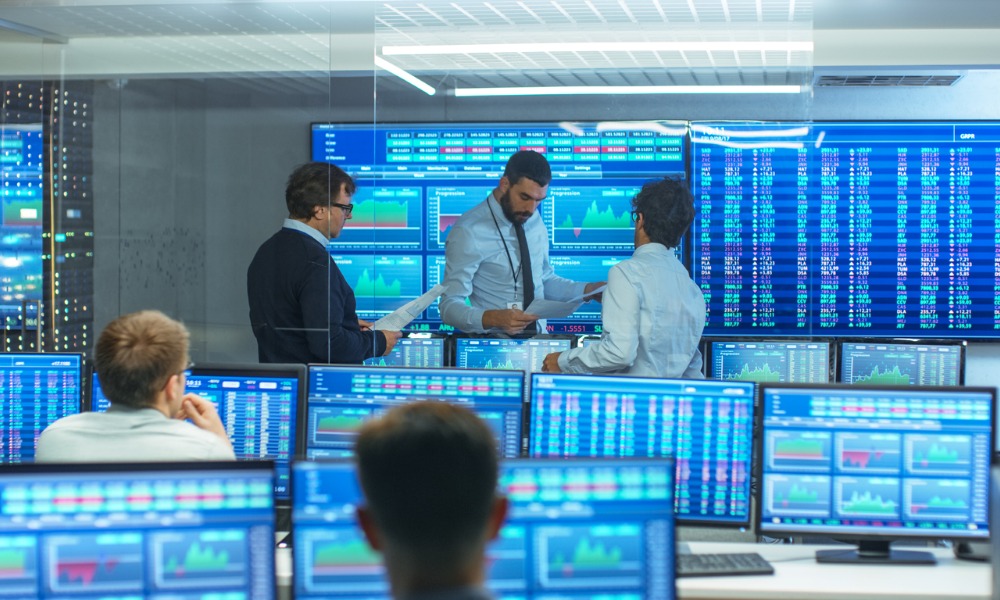Global research head says market cap has been concentrated, sees central bank policy as indicator of future performance

FTSE Russell has announced anticipated changes to the Russell U.S. Indexes for its 32nd annual reconstitution. This year’s reconstitution is driven by a few key long-term trends and a number of significant impacts from the COVID-19 pandemic.
Leaders from FTSE Russell explained that, broadly, the reconstitution reflects a growing concentration in large-cap companies as small-cap stocks shrink further with total U.S. equity market cap down 1 per cent, while the market cap of the 10 largest U.S. stocks is up more than 23 per cent. Tech remains at the top of the pyramid while healthcare has become the biggest sector in the Russell 2000, driven largely by the outperformance of biotech and pharma during the pandemic. While a transparent reconstitution should protect index investors from immediate volatility, one top FTSE Russell analyst says the greater concentration in the market does leave investors exposed.
“You've had this enormous concentration … and this is really just down to that one big sector, the tech sector,” says Philip Lawlor, managing director of Global Market Research at FTSE Russell. “When one sector accounts for more than a quarter of the overall benchmark, and that's highly skewed to a handful of big stocks, if one or two those companies hit a banana skin that would have a very big effect on aggregate volatility.”
Lawlor says that investors have been aware of this concentration risk for a long time now, but tech has managed to serve as a “win-win” investment despite that, growing in the face of trade tensions last year and leading the rapid rebound after the COVID-19 crash in March as investors realized these companies are set to benefit most from the new normal.
Healthcare is a sector, too, driven to outperformance by the current realities of the pandemic. Pharma and biotech, in particular, has been a strong performer on the back of COVID-19 research and innovation. Lawlor says this bucks the trend of past years where medical technology has been the growth subsector in healthcare. The pandemic has reversed that reality.
The reconstitution is built to be agnostic towards concentration risks and simply reflect market capitalization. Lawlor says, though, that this concentration does expose investors to volatility risks in the form of another macro shock or trades driven by a fear of missing out among investors and PMs who have remained sceptical about the rally’s apparent dislocation from underlying economics are forced to buy in to avoid missing the apparent growth of the rally. Lawlor says these FOMO trades could catalyse further volatility.
The largest immediate impact, Lawlor says, will be on passive index investments. The managers of indexed products will have to rebalance but Lawlor expects that the transparent approach FTSE Russell has taken will make for few shocks come Friday.
The second question, Lawlor says, is a beta issue as to where investors should go from there. He says that especially in the large-cap Russell 1,000 we’ve seen a V-shaped recovery.
“The big conundrum for everyone is whether this is telling us the market expects a V-shaped recovery in the economy, or have we got a massive disconnect during between Wall Street and Main Street,” Lawlor says. “Main street is telling us, at best, that it's going to be a pretty shallow U [recovery]. In that case, has the market run ahead of itself? That is clearly the $64 trillion question.”
The other big trend that Lawlor sees underlying the reconstitution is that market sentiment has become largely determined by central bank policy rather than economic outlooks. In the wake of policy moves that dwarf the scale of decisions made during the great financial crisis, Lawlor says market attentiveness to policymakers has created a disconnect between markets and economic realities which aren’t as likely to see real improvement until next year. Despite the uncertainty of the next two quarters Lawlor sees, he says that central banks have been explicit in saying they won’t sit by and let markets dip significantly again. This, in turn, makes for a “Pavlovian reaction” in investor’s risk appetite, reassured of central bank policy.
“I think the big question for investors is, could you eventually see central banks buying equities, just as the Bank of Japan does,” Lawlor says. “Could you end up seeing the Federal Reserve stepping in and saying, we've done government bonds MBS, we've gone into the corporate arena, we've been making direct loans to small and medium enterprises. But one sure way of propping up household net worth is to ensure that the equity value element of that net worth is supported by the Central Bank. They've got lots of tools at their disposal, I think that is going to be the key driver of risk appetite going forward.”



